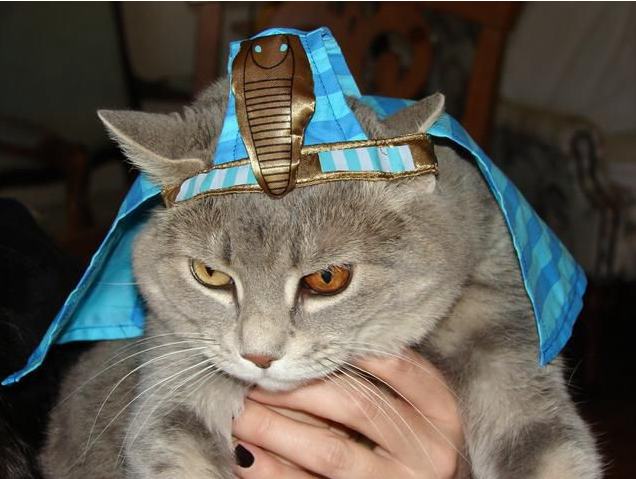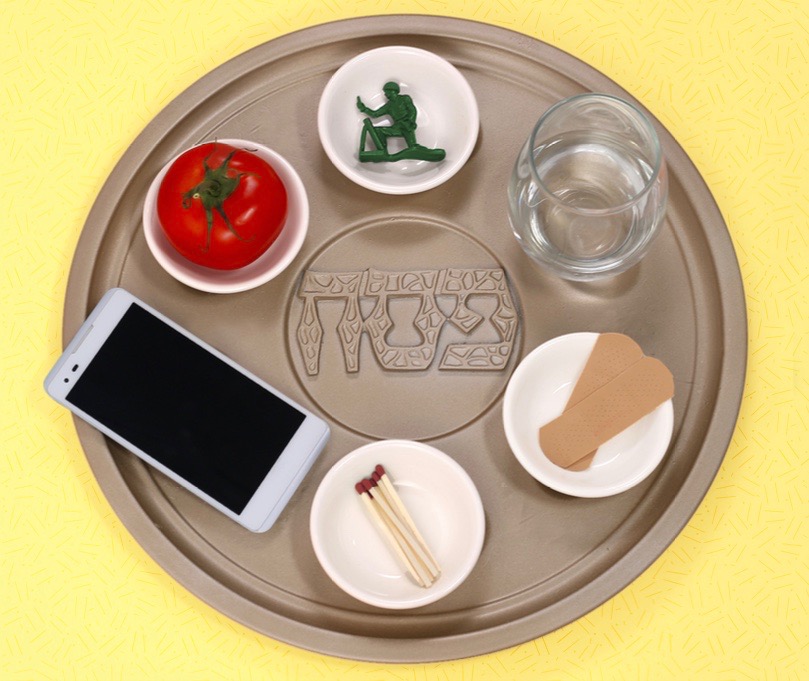October 08,2019
Posted by Haggadot
|
June 25,2019
Posted by Haggadot
|
Have you heard about our Brand Camp training program? It starts in just a couple weeks, and I want make sure you have a chance to register! This 7-week series of online classes & personal coaching sessions will help you freshen up your brand & social media strategy for the Jewish New Year.
Click here for the full schedule & class descriptions. You can join the webinars live, or catch up on recordings to work at your own pace. Sign up by this Friday, July 5th for $25 off your registration. I hope we can work together! See below for what past participants have said about working with Custom & Craft. As always, free to email me directly with questions.
Thanks! Eileen -
Eileen Levinson
Founder & Executive Creative Director
Haggadot.com | Custom & Craft
|
|
Reviews From Past Brand Camp Participants:
Custom & Craft Brand Camp helped me/my organization understand just how important it is to have a consistent brand that connects people to our work and our mission. I was able to take the valuable tools I gained and apply them immediately to our website and brand materials. What became so clear to me, what Eileen really helped us understand, was that it is so important to be true to our core values, our "why" and then think about what it is we do. She helped us understand what makes us special, what differentiates us. I cannot thank her enough.
— Julia Moss, The Miracle Project
Eileen was able to take our intentions and focus them into solid and effective ideas. It has been a pleasure working with her. I’ve learned so much.
— Neshama Kravitz, Brand Camp Participant 2018
When I reached out to Custom & Craft, I was hoping to get some technical assistance in executing a specific social media campaign. But when we met, her thoughtful and directed questions made it clear to me that my initial idea was not viable. She asked that I complete a simple yet challenging assignment that has become the core of a campaign that will be far more effective in capturing the attention of those who need our help. We could not have done it without her guidance.
— Esther Macner, Get Jewish Divorce Justice
I’ve been attending quite a few webinars and social media trainings lately, and I enjoyed yours the most!
— Maryam Saleemi, New Ground: A Muslim Jewish Partnership for Change
|
April 26,2019
Posted by Haggadot
|
Happy Passover Haggadah-makers! If you haven't donated yet, please consider supporting Haggadot.com. Your dollars sustain our work for another year. We rely 100% on users like you! You can also help us by providing feedback. Please take 2 minutes to answer a short survey about your experience on the site. Thanks! We couldn't do this without you!
Haggadot.com is a project of Custom and Craft Jewish Rituals, 501(c)(3). Your gift is tax-deductible! |
|
|
April 19,2019
Posted by Haggadot

Short on time? Download & print our 2019 Favorites Haggadah or any Featured Haggadah.
Want larger font or special formatting? Download a Word Doc of your Haggadah!
Feeling a little confused? Watch a short tutorial video.
Need to keep the kids busy? Print out some coloring pages.
Got seder plate anxiety? Check out these cool alternatives.
Need a charoset recipe? Make one of these
Thinking about supporting us? Please do! We rely entirely on user donations.
Questions? We're here until 7pm Eastern, write us at [email protected] YOU'VE GOT THIS!
April 18,2019
Posted by Haggadot

Sybil Kaplan, Canadian Jewish News, April 8, 2019
What Passover seder symbol is found in the traditions of all Jewish communities, but is not mentioned in the biblical passage that enjoins us to eat the paschal offering, matzah and bitter herbs? Haroset.
We define haroset loosely as a paste of fruit, spices, wine and matzah meal that’s symbolic of the mortar used by the Hebrews when they were slaves in Egypt.
The word is of unknown origin, but may come from the word “heres,” meaning clay, because of its colour. The custom of eating haroset is thought to have come from the time of the Babylonians, who dipped food in relishes or sauces to add flavour.
Different versions of haroset appear in the Ashkenazic and Sephardic traditions.
The New York Times Passover Cookbook, edited by Linda Amster, says that the Iraqi version is one of the oldest and most time-consuming recipes, dating back to the Babylonian exile of 579 BCE. Made into a jam from dates, grapes, pomegranate and honey, it was a sweetener in the ancient world and is still used by Iraqi, Burmese, Syrian and Indian Jews.
The Talmud says that haroset must be sharp in taste and similar to clay in substance and colour, thus the recipe varies among different communities.
Ashkenazim tend to use apples, chopped almonds (or other nuts), cinnamon, red wine and sometimes matzah meal. Sephardim and those from Middle Eastern countries tend to use fruits that grew in the Land of Israel in biblical times, such as grapes, figs, dates, almonds and pomegranates. Israelis often turn haroset into a dessert by adding bananas, dates, orange juice and sugar.
Because the maror or bitter herb is so strong, some say the real purpose of haroset is to allay the bitterness. As part of the ritual seder, the haroset and maror are placed between matzot to make a sandwich, which is said to have been invented by Rabbi Hillel in the first century CE, hence the name, Hillel’s sandwich.
Different Jewish communities have variations on the ingredients. Jews from the Island of Rhodes use dates, walnuts, ginger and sweet wine. The Jews of Salonika, Greece, add raisins. Other Greek Jews use walnuts, almonds, pine nuts, raisins, cinnamon, cloves and red wine, and spread it thickly on matzah. Turkish Jews include oranges.
Moroccan Jews sometimes make haroset paste and roll it into balls. This is a legacy from the Jews of medieval Spain, who made the balls of apples, dried fruit, almonds, cooked chestnuts, sugar and cinnamon, and then drizzled the balls with white vinegar before serving.
The Jews of Venice use chestnut paste, dates, figs, poppy seeds, walnuts, pine nuts, orange peel, dried apricots, raisins, brandy and honey.
The Jews of Bukhara, Uzbekistan, use almonds, dates, raisins, apples and wine.
Egyptian haroset contains dates, nuts, bananas, apples, wine, cinnamon and pomegranate seeds.
Instead of haroset as we know it, some Iraqi Jews use a date syrup call halek – which is made by boiling dates, straining the liquid and then reducing it over a low flame until thick – and sprinkling chopped nuts on top of it.
In Holland, they make a chunky mixture with more apples and less nuts, combined with cinnamon, sugar, raisins and sweet wine. Jews from Surinam, in Dutch Guiana, use seven fruits and coconut.
Following the edict to have a sharp taste, Persian Jews use dates, pistachio nuts, almonds, raisins, apples, oranges, bananas, pomegranate seeds, sweet wine, cloves, cardamom, cinnamon, vinegar and black pepper.
Likewise, Yemenite Jews use dates, raisins, almonds, nuts, figs, dates, sesame seeds, apples, pomegranate seeds, grape juice, ginger, cinnamon, cardamom, cloves and black pepper.
Jews from Afghanistan pound haroset in a mortar with a pestle and use walnuts, hazelnuts, almonds, apples, sweet wine, pomegranate seeds, dates and black pepper.
However you make haroset, be inventive and make several different kinds to serve.
My Mom’s Haroset
2 apples, chopped
75 ml (1/3 cup) ground nuts
1.25 ml (1/4 tsp) cinnamon
15 ml (1 tbsp) honey
30 ml (2 tbsp) sweet red wine
Place chopped apples in a bowl. Add nuts, cinnamon and honey and mix until smooth.
Add wine and mix well.
Makes 6 servings.
My Sephardic Haroset
250 ml (1 cup) chopped dates
125 ml (1/2 cup) raisins
1 chopped apple
125 ml (1/2 cup) finely chopped nuts
5 ml (1 tsp) ginger
60 ml (1/4 cup) red wine
Combine all ingredients.
Yields 500 ml (2 cups).
Sephardic Haroset
250 ml (1 cup) chopped walnuts
60 ml (1/4 cup) chopped almonds
125 ml (1/2 cup) raisins
125 ml (1/2 cup) chopped dates
60 ml (1/4 cup) red wine
30 ml (2 tbsp) lemon juice
0.5 ml (1/8 tsp) cinnamon
apricot halves
Combine walnuts, almonds, raisins, dates, wine, lemon juice and cinnamon.
Form into balls.
Spoon onto apricot halves.
Sabra Haroset
2 peeled and cored apples
6 peeled bananas
1 lemon, juiced
1 orange, juiced
20 pitted dates
250 ml (1 cup) peanuts
250 ml (1 cup) dry red wine
matzah meal, as needed
10 ml (2 tsp) cinnamon
sugar, to taste
Put fruit and nuts though a grinder (or blender or food processor).
Add wine, lemon juice and orange juice.
Add enough matzah meal to form the consistency you want.
Mix in cinnamon and sugar.
Courtesy of Be'chol Lashon. Originally published here: https://www.cjnews.com/holiday-recipes/haroset-from-around-the-world
April 16,2019
Posted by Haggadot
|
April 11,2019
Posted by Haggadot
A modern twist with a roasted beet instead of the lamb shank, and an avocado seed instead of the egg.
A Second Seder Plate
Why have just one? Jewish World Watch asks us to consider the plight of over 65 million displaced persons around the world with their #SecondSederPlate activity guide.
A Chili Pepper
This fantastic Jewish Mexican Haggadah encourages us to add the pepper to "honor the abuelas, the bisabuelas, the chignonas, the curandras, and the other femme Moshes, Miriams, Tziporahs and Aarons in our lives who taught us who we are..."
A Pine Cone
Temple Israel of Boston invites us to remember the mass incarceration crisis in America.
An Artichoke
Interfaith Family notes, "Jewish people have been thorny about this question of interfaith marriage" and has chosen an artichoke to spark conversation towards inclusiveness at our seder tables.
An Olive
Olive branches are traditionally known as a symbol of peace, so this author reminds us "we are not free until there is peace in our homes, our community and in our world"
Coconut & Fruit Salad
JQ International has a full LGBTQ Haggadah with a seder plate that includes a coconut for those "still in the closet and their struggle in coming out" and fruit salad for "our collective potential and recognition"
Pineapple
This author asks us to be mindful of depression and anxiety that reside within us, adding "May the source of all deliver all who suffer from their own personal Mitzrayim (narrow places)"
An Oyster
Kosher? No! But it is a great conversation starter about our reliance on oil and the effects of drilling.
Bitter Chocolate
Some host Chocolate seders to entertain the kids, while others eat fair-trade chocolate to honor workers' struggles. In their "Revenge of Dinah" haggadah, a group of activist teens have created a Bitter Chocolate Ritual for us to consider the pervasiveness of rape culture in our Jewish communities.
And for something completely different, try The Science Seder Plate. It's a great coloring activity with science facts about the traditional seder symbols. We LOVE it!
https://www.haggadot.com/clip/
Do you have a new symbol on the seder plate that you'd like to share? Let us know! Post it to the site, or email us at info@haggadot.com
March 23,2018
Posted by Haggadot

Lately it seems as though smart phones are taking over our lives, shortening our attention spans or even making us more self-absorbed - but is it possible that the practice of selfies can move beyond narcissism to be instructive, even connective? We think so.
Recently, Haggadot.com learned of The Selfie Seder, shared by a group of Jewish educators on Facebook, which encourages participants to capture selfies of each aspect of the seder as a scavenger hunt / performative educational tool. We love that it merges the seemingly ubiquitous practice of taking selfies with instructive learning. After all, the Haggadah states that "In every generation, each person must regard himself or herself as if he or she had come out of Egypt" and the Selfie Seder is taking that to a new level of creativity.
Check out The Selfie Seder here: https://goo.gl/4mZU7a
Whether or not you do it at your actual seder, or stage this activity beforehand is up to you.
And if you're interested in bringing a performative activity to your seder (with or without selfies), you can also check out SIJCC's Human Tableau, a Passover Play, or other impromptu performance activities.
Whatever you choose, let us know how it goes!
March 20,2018
Posted by Haggadot

Most of us know about the orange, Miriam's Cup, and even a beet in place of a shankbone for vegetarian-friendly seders. But have you heard about the pine cone, the coconut or the banana? Here's our growing list of every seder plate addition that we've seen on the site.
A Second Seder Plate
Why have just one? This year, Jewish World Watch asks us to consider the plight of over 65 million displaced persons around the world with their #SecondSederPlate activity guide.
A Chili Pepper
This fantastic Jewish Mexican Haggadah encourages us to add the pepper to "honor the abuelas, the bisabuelas, the chignonas, the curandras, and the other femme Moshes, Miriams, Tziporahs and Aarons in our lives who taught us who we are..."
A Pine Cone
Temple Israel of Boston invites us to remember the mass incarceration crisis in America.
An Artichoke
Interfaith Family notes, "Jewish people have been thorny about this question of interfaith marriage" and has chosen an artichoke to spark conversation towards inclusiveness at our seder tables.
An Oyster
Kosher? No! But it is a great conversation starter about our reliance on oil and the effects of drilling.
An Olive
Olive branches are traditionally known as a symbol of peace, so this author reminds us "we are not free until there is peace in our homes, our community and in our world"
Coconut & Fruit Salad
JQ International has a full LGBTQ Haggadah with a seder plate that includes a coconut for those "still in the closet and their struggle in coming out" and fruit salad for "our collective potential and recognition"
Pineapple
This author asks us to be mindful of depression and anxiety that reside within us, adding "May the source of all deliver all who suffer from their own personal Mitzrayim (narrow places)"
Bitter Chocolate
Some host Chocolate seders to entertain the kids, while others eat fair-trade chocolate to honor workers' struggles. In their "Revenge of Dinah" haggadah, a group of activist teens have created a Bitter Chocolate Ritual for us to consider the pervasiveness of rape culture in our Jewish communities.
Ruth's Cup
Many consider Ruth to be the original convert and model for the diversity in Jewish life. To honor her and represent an inclusive vision of Judaism, some have added a new cup to the table rituals.
A Banana
Religious Action Center also asks us to consider the refugee crisis, this time with a banana, considered a luxury in war-torn Syria.
A Tomato
Those who stand in solidarity with workers' rights issues ask us to add the tomato to consider the struggles of farm workers.
Ready to get creative at your seder? Try our Alternative Seder Plate Activity to draw your own symbols on the plate. And for something completely different, try The Science Seder Plate. It's a great coloring activity with science facts about the traditional seder symbols. We LOVE it!
Do you have a new symbol on the seder plate that you'd like to share? Let us know! Post it to the site, or email us at [email protected]
January 17,2017
Posted by Haggadot

It's true that Pesach doesn't have the pop cultural cachet of, say, Hanukkah. But as one of the most important holidays on the Jewish calendar, there is an impressive range of pop cultural depictions of Passover. Read on to learn about four of the best-loved depictions of Passover and the Exodus story.
The Ten Commandments
No list of Passover entertainments would be complete without this momentous film. To modern eyes, Cecil B. DeMille's retelling of Exodus may seem a little hokey. But the film boasts an all-star list of excellent actors, and the sets and on-location filming (in Egypt and Mt. Sinai) are genuinely impressive. What's more, its special effects (especially the parting of the Red Sea) earned it an Academy Award -- as well as a reputation as the most expensive film ever made at the time.
'A Rugrats Passover'
Rugrats isn't just the favorite TV series of many a '90s kid: it also portrayed the Jewish faith of the character Didi (and her son Tommy) with sensitivity and grace. In this episode, the show's babies find themselves trapped in an attic with Didi's father, Boris. To while away the time, Boris tells the babies the Passover story -- and the babies imagine themselves as part of the story. The episode won considerable critical acclaim, as well as the highest ratings in Nickelodeon's history.
The Prince of Egypt
This 1998 animated musical is another '90s favorite, and it retells the Exodus story with fun and flair. DreamWorks' stunning animation drew both critical and audience acclaim, and the film's cast consists of A-list talent like Val Kilmer, Michelle Pfeiffer and Ralph Fiennes. A pop soundtrack by composer Stephen Schwartz keeps things moving and grooving. Keep an ear out for Mariah Carey and Whitney Houston's "When You Believe," which charted in the U.S. and won an Academy Award for Best Original Song.
Shalom Sesame: It's Passover, Grover!
Sesame Street loves to teach kids about traditions from a variety of cultures, and the Shalom Sesame series focuses on sharing Jewish traditions with children who may not otherwise encounter them. In this special, Grover and his friends dash across Sesame Street, looking for horseradish to round out their Seder plates. Meanwhile, fun interstitials teach kids about the Hebrew alphabet and calendar, and various Passover traditions, including Mimunah. It's upbeat, educational and respectful, and a great addition to the Passover traditions of any family with little kids.








